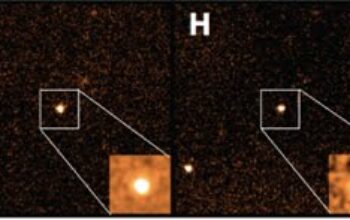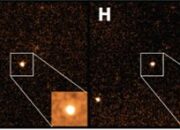In recent years, quantum computing has emerged from the realms of theoretical physics into the practical domain, captivatating researchers, technologists, and businesses alike. Google, among other technology behemoths, has made significant strides in the development of quantum computers. These machines, operating on the principles of quantum mechanics, boast a unique capacity that fundamentally diverges from classical computing. Understanding this capacity involves delving into several dimensions, including qubit architecture, coherence times, error rates, and algorithmic performance.
At the heart of Google’s quantum computing endeavors lies the qubit, which serves as the fundamental unit of quantum information. Unlike classical bits that represent either a 0 or a 1, qubits can exist simultaneously in multiple states thanks to a phenomenon known as superposition. Google’s quantum processors utilize various technologies to form qubits, primarily relying on superconducting circuits. These circuits harness the flow of electric current through superconductors, enabling the creation of stable qubits capable of performing complex calculations.
One pertinent metric in assessing the capacity of Google’s quantum computers is the number of qubits incorporated into their systems. For instance, Google’s Sycamore processor boasts 53 operational physical qubits. While this may appear minimal compared to classical systems with millions of transistors, the intrinsic capabilities of qubits enable exponential growth in computational power. This disparity is well illustrated by the concept of quantum parallelism, wherein a single quantum operation can overarchingly process multiple outcomes simultaneously.
However, examining the number of qubits in isolation provides an incomplete picture. Another critical factor is coherence time—the duration for which a qubit retains its quantum state before succumbing to decoherence. The coherence time in Google’s quantum computers, measured in microseconds to milliseconds, is quintessential for conducting reliable computations. Longer coherence times allow for more complex calculations before quantum information dissipates into the environment, thereby enhancing the practical utility of these quantum machines.
Moreover, the fidelity of quantum operations significantly influences the overall capacity of Google’s quantum computers. Fidelity refers to the accuracy with which quantum operations are performed. Despite advancements, error rates persist and can undermine the output quality of quantum algorithms. Error correction techniques are hence imperative to ensure that quantum computations yield valid results. Google has invested heavily in developing sophisticated quantum error correction schemes, which are vital for scaling up quantum computations and expanding their potential applications.
The aggregate interplay of these factors—number of qubits, coherence times, and fidelity—culminates in a computational capability that, while currently nascent, harbors immense potential. Google has engaged in showcasing this capacity through various quantum algorithms, ranging from optimization problems to complex simulations in quantum chemistry. For instance, quantum algorithms designed for optimization tasks have exhibited the anticipation to outperform traditional methods significantly. As these algorithms mature, the implications for industries such as finance, pharmaceuticals, and logistics become increasingly profound.
To illustrate the practical application of Google’s quantum computing capacity, one can consider specific use cases. Quantum machine learning algorithms are being developed to sift through vast datasets more efficiently than classical counterparts. The integration of quantum principles in machine learning offers a tantalizing glimpse into future possibilities, where quantum computers are deployed to unravel complex patterns that would otherwise remain obscured.
Beyond just algorithmic superiority, the operational capacity of Google’s quantum hardware is further enhanced by the creation of quantum circuits. Quantum circuits represent a structured arrangement of quantum gates that manipulate qubits in a coherent manner. The design of these circuits plays a crucial role in maximizing the potential of the underlying qubits, emphasizing the importance of research into quantum circuit architecture.
Despite the monumental progress achieved by Google and other organizations, the challenges inherent to quantum computing remain substantial. The development of scalable quantum systems is accompanied by the necessity of nurturing a robust quantum ecosystem comprising software, hardware, and algorithmic innovation. This expansive endeavor mandates collaboration across multiple disciplines, particularly as researchers analyze and refine methods to enhance qubit coherence, reduce error rates, and devise sophisticated algorithms tailored for quantum environments.
Finally, the societal implications of Google’s advancements in quantum computing cannot be understated. As capacity grows, so too does the responsibility to ensure these powerful technologies are employed ethically and sustainably. The dual-use nature of quantum computing technologies poses significant questions regarding privacy, security, and access. Engaging with these ethical dimensions will be critical as quantum computing proliferates into mainstream utility.
In conclusion, while Google’s quantum computers demonstrate innovative capacities through their qubit frameworks, coherence longevity, and error correction methodologies, there is still much to explore. The implications of their quantum advances will surely permeate various sectors, ultimately reshaping our understanding of computation. By navigating the intricate landscape of quantum computing and systematically addressing the associated challenges, Google’s ongoing research endeavors promise to unlock unprecedented possibilities for solving complex problems that are currently intractable by classical systems.










